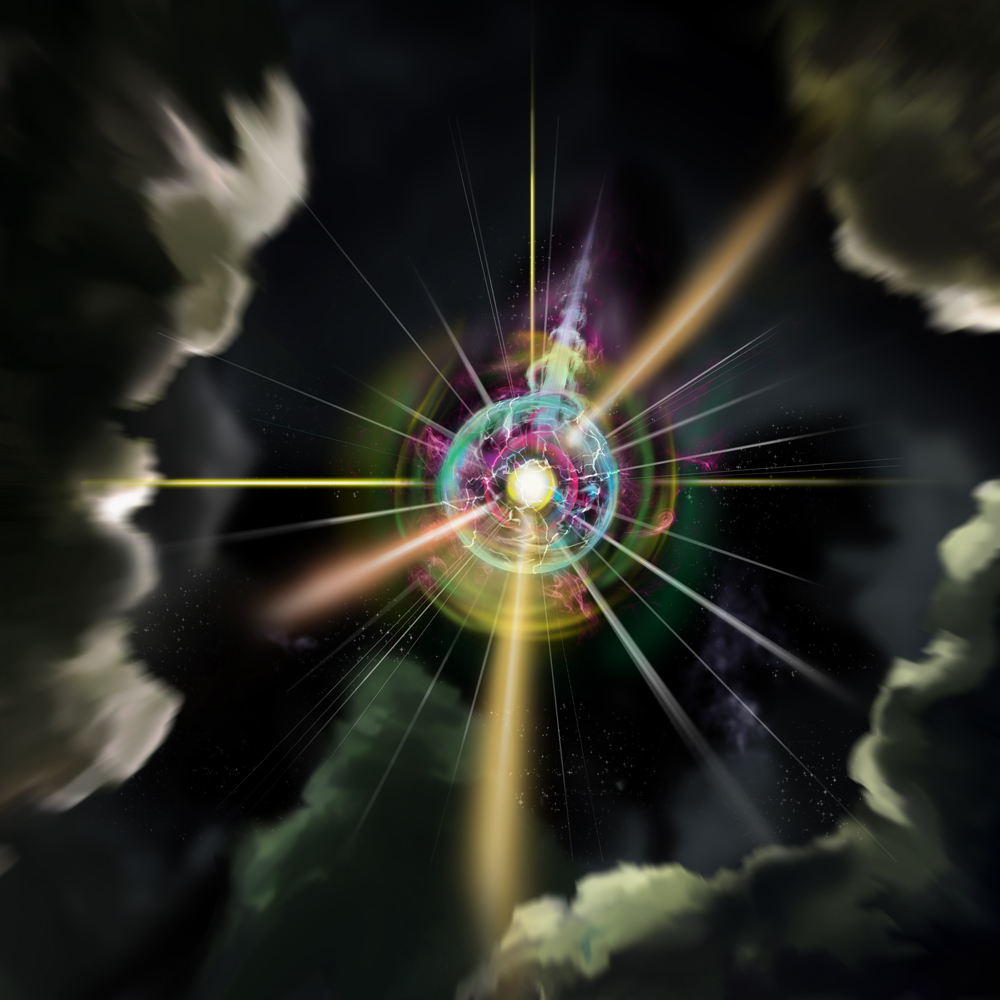Physicists create synthetic magnetic monopoles
January 30, 2014

Artist illustration of the synthetic magnetic monopole (credit: Heikka Valja)
Nearly 85 years after pioneering theoretical physicist Paul Dirac predicted the possibility of their existence, scientists have created, identified and photographed synthetic magnetic monopoles.
The groundbreaking accomplishment, described by a paper in Nature, paves the way for the detection of the particles in nature, which would be a revolutionary development comparable to the discovery of the electron, according to the scientists.
“The creation of a synthetic magnetic monopole should provide us with unprecedented insight into aspects of the natural magnetic monopole — if indeed it exists,” said Amherst College Physics Professor David S. Hall.
Ordinarily, magnetic poles come in pairs: they have both a north pole and a south pole. As the name suggests, however, a magnetic monopole is a magnetic particle possessing only a single, isolated pole — a north pole without a south pole, or vice versa.
In 1931, Dirac published a paper that explored the nature of these monopoles in the context of quantum mechanics. Despite extensive experimental searches since then, no observation of a naturally-occurring magnetic monopole has yet been confirmed.
The experiment
Hall’s team adopted an innovative approach to investigating Dirac’s theory, creating and identifying synthetic magnetic monopoles in an artificial magnetic field generated by a Bose-Einstein condensate, an extremely cold atomic gas tens of billionths of a degree warmer than absolute zero.
The team relied upon theoretical work published by Aalto University (Finland) Academy Research Fellow Mikko Möttönen and his student Ville Pietilä that suggested a particular sequence of changing external magnetic fields could lead to the creation of the synthetic monopole.

Evidence of a magnetic monopole: decay of a doubly quantized vortex (credit: M. W. Ray et al./Nature)
The team was rewarded with photographs that confirmed the monopoles’ presence at the ends of tiny quantum whirlpools within the ultracold gas. The result proves experimentally that Dirac’s envisioned structures do exist in nature, explained Hall, even if the naturally occurring magnetic monopoles remain at large.
The finding may lead to the development and understanding of entirely new materials, such as higher-temperature superconductors for the lossless transmission of electricity, said Hall. He also said that the team’s discovery of the synthetic monopole provides a stronger foundation for current searches for magnetic monopoles at the Large Hadron Collider at CERN.
This material is based upon work supported by the National Science Foundation, the Academy of Finland through its Centres of Excellence Program, and the Finnish Doctoral Programme in Computational Sciences.
Abstract of Nature paper
Magnetic monopoles — particles that behave as isolated north or south magnetic poles — have been the subject of speculation since the first detailed observations of magnetism several hundred years ago. Numerous theoretical investigations and hitherto unsuccessful experimental searches have followed Dirac’s 1931 development of a theory of monopoles consistent with both quantum mechanics and the gauge invariance of the electromagnetic field. The existence of even a single Dirac magnetic monopole would have far-reaching physical consequences, most famously explaining the quantization of electric charge. Although analogues of magnetic monopoles have been found in exotic spin ices and other systems, there has been no direct experimental observation of Dirac monopoles within a medium described by a quantum field, such as superfluid helium-3. Here we demonstrate the controlled creation of Dirac monopoles in the synthetic magnetic field produced by a spinor Bose–Einstein condensate. Monopoles are identified, in both experiments and matching numerical simulations, at the termini of vortex lines within the condensate. By directly imaging such a vortex line, the presence of a monopole may be discerned from the experimental data alone. These real-space images provide conclusive and long-awaited experimental evidence of the existence of Dirac monopoles. Our result provides an unprecedented opportunity to observe and manipulate these quantum mechanical entities in a controlled environment.